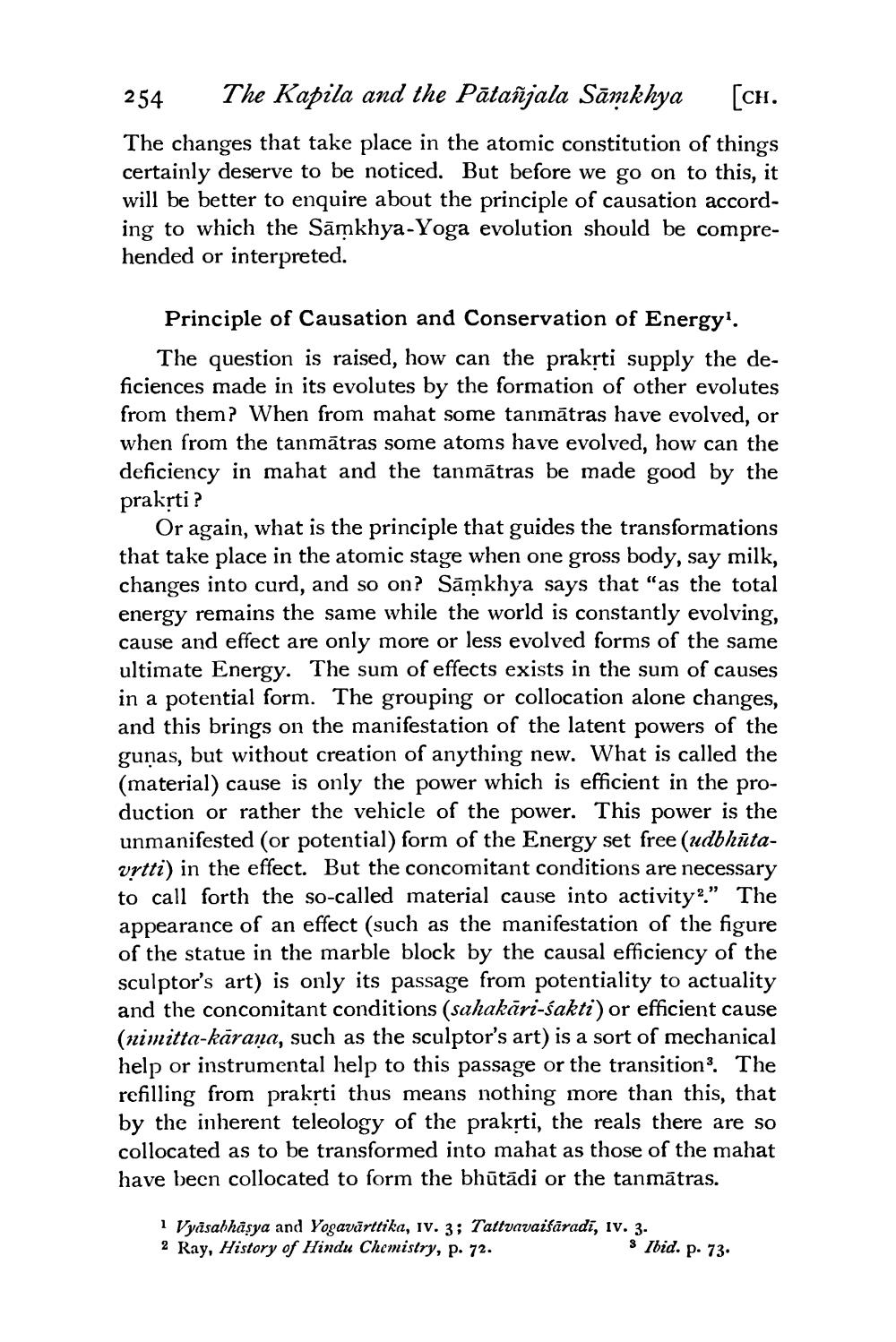________________
254 The Kapila and the Pātañjala Sāmkhya [ch. The changes that take place in the atomic constitution of things certainly deserve to be noticed. But before we go on to this, it will be better to enquire about the principle of causation according to which the Sāmkhya-Yoga evolution should be comprehended or interpreted.
Principle of Causation and Conservation of Energy'.
The question is raised, how can the praksti supply the deficiences made in its evolutes by the formation of other evolutes from them? When from mahat some tanıātras have evolved, or when from the tanmātras some atoms have evolved, how can the deficiency in mahat and the tanmātras be made good by the praksti?
Or again, what is the principle that guides the transformations that take place in the atomic stage when one gross body, say milk, changes into curd, and so on? Sāmkhya says that was the total energy remains the same while the world is constantly evolving, cause and effect are only more or less evolved forms of the same ultimate Energy. The sum of effects exists in the sum of causes in a potential form. The grouping or collocation alone changes, and this brings on the manifestation of the latent powers of the guņas, but without creation of anything new. What is called the (material) cause is only the power which is efficient in the production or rather the vehicle of the power. This power is the unmanifested (or potential) form of the Energy set free (udbhūtavrtti) in the effect. But the concomitant conditions are necessary to call forth the so-called material cause into activity?." The appearance of an effect (such as the manifestation of the figure of the statue in the marble block by the causal efficiency of the sculptor's art) is only its passage from potentiality to actuality and the concomitant conditions (sahakāri-sakti) or efficient cause (nimitta-kāraṇa, such as the sculptor's art) is a sort of mechanical help or instrumental help to this passage or the transition? The refilling from praksti thus means nothing more than this, that by the inherent teleology of the praksti, the reals there are so collocated as to be transformed into mahat as those of the mahat have becn collocated to form the bhūtādi or the tanmatras.
i Vyasabhâsya and Yogavārttika, iv. 3; Tattvavaisāradi, iv. 3. 2 Ray, History of Hindu Chemistry, p. 72.
s Ibid. p. 73.




